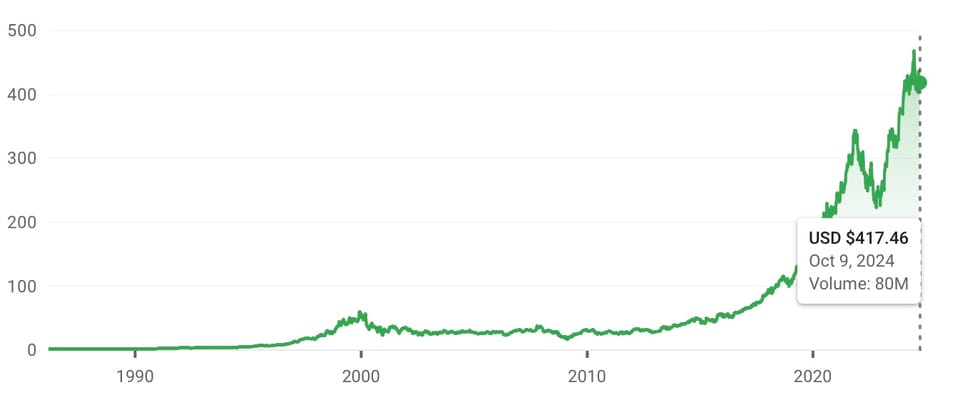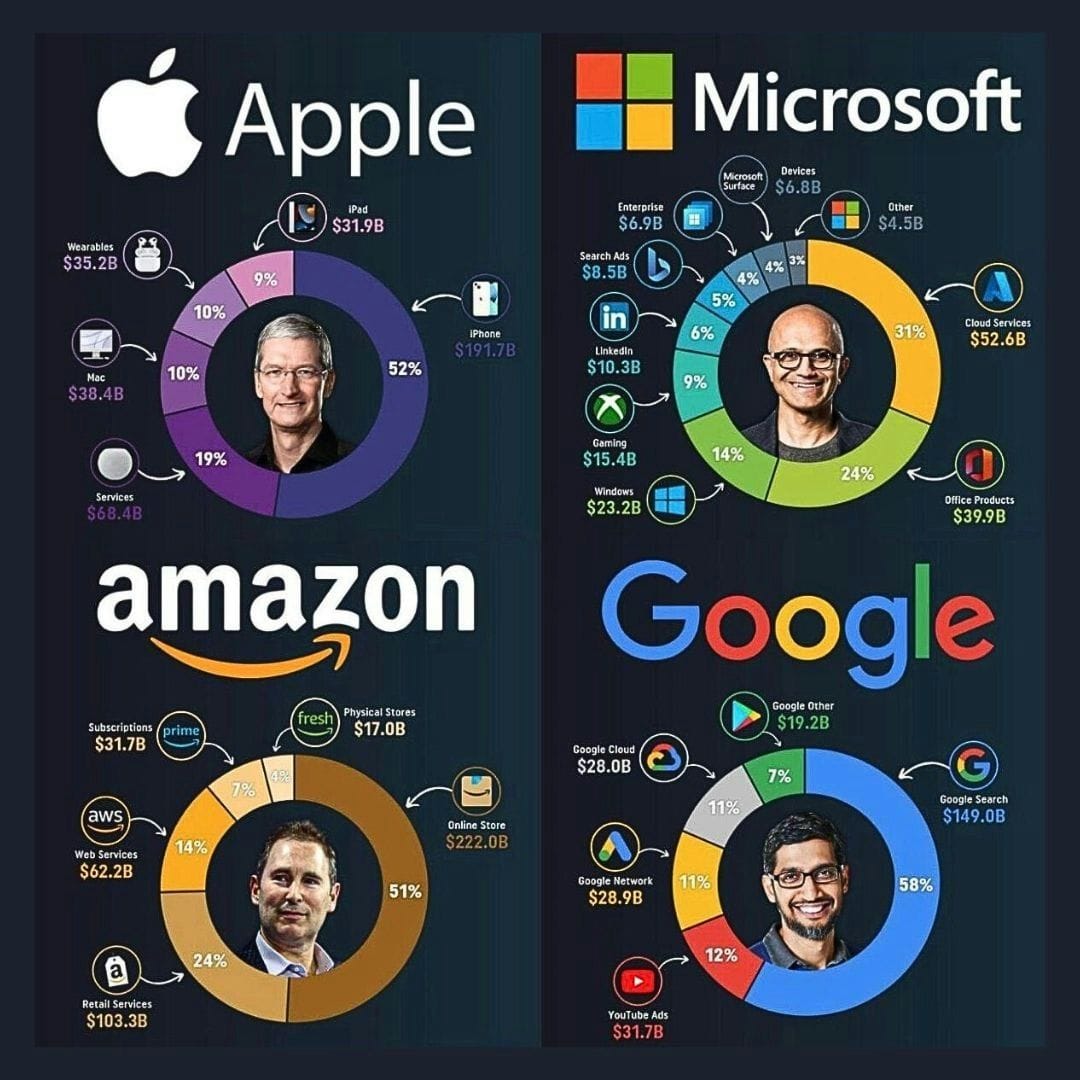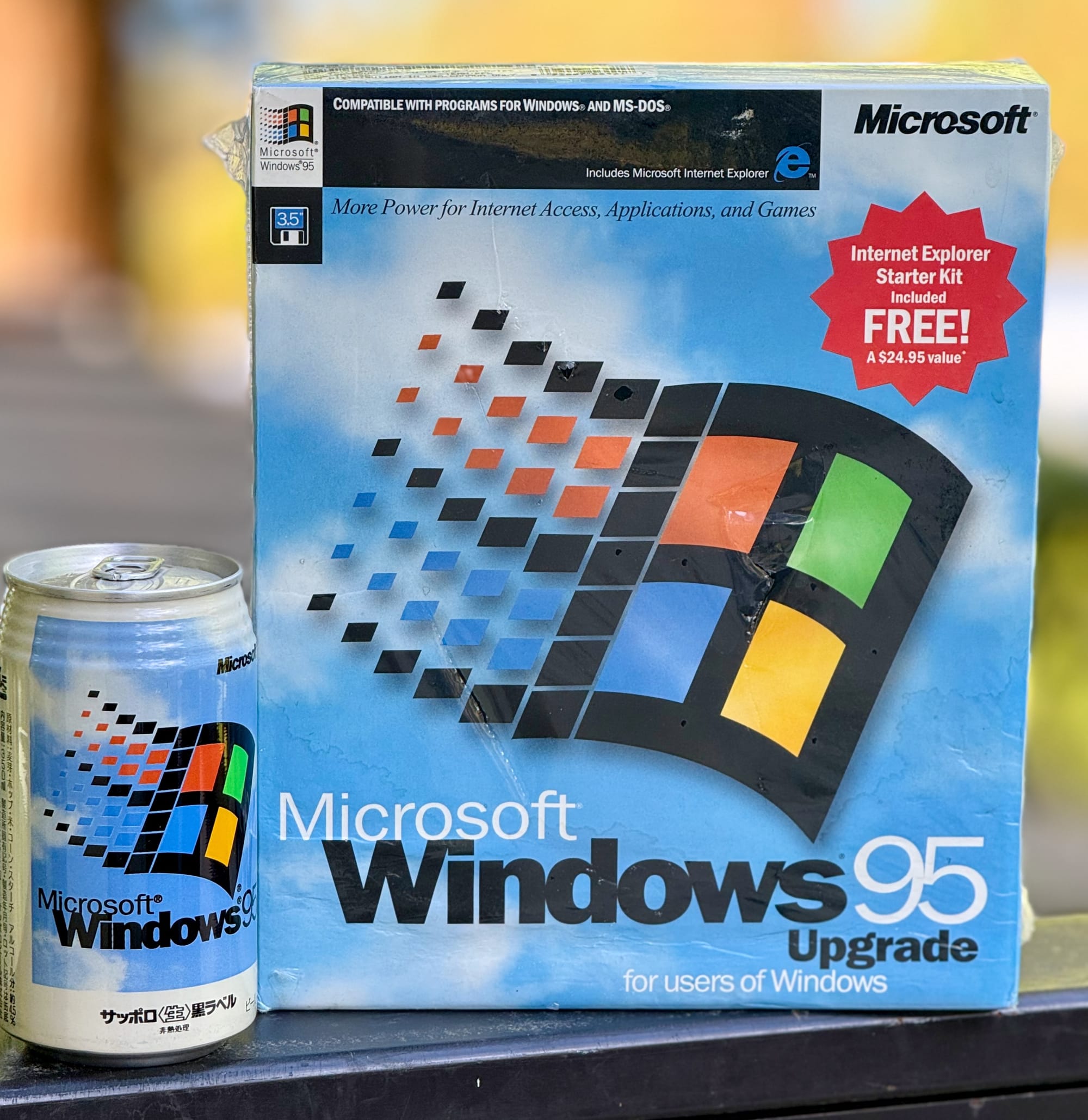Reflections on Microsoft's mission, lessons learned

Microsoft certainly has strong mojo these days. The AI wave has reinvigorated their tools business, apps, Surface PC, and pretty much everything else they are doing. It is great to see the energy and innovation, and the company seems set up for continued success. The company's mission has evolved from that of a young innovator to that of an industry leader.
Microsoft’s Mission
Microsoft’s mission statement is “…to empower every person and every organization on the planet to achieve more.” This mission statement evolved in the 2000s into this current form; the original Microsoft mission statement of “A PC on every desk and in every home” was a tremendous and focusing statement in its day. Everyone in the company understood the statement and was on board with it. It was easy for people to be aligned inside the company — every decision needed to support the PC mission.
However, the original mission statement had some inherent shortcomings. First, it had a built-in expiration date — by the late 90s, PCs had penetrated much of the market, creating a void in the mission for a while. Satya moved to correct this early in his tenure. The current statement is very durable — there is no completion date to empower everyone to achieve more; it can still be true in 100 years.
The larger shortcoming was the lack of customer perspective in the original statement. The mission statement was all about Microsoft and Microsoft's goals. Selling PCs was good for Microsoft and was often good for customers, but it wasn’t a customer goal. No customer wanted PCs — they wanted solutions, they wanted apps. And the mission overfocused on a particular model of computing — the PC — which is not where the industry has ended up. PCs are still hugely important, but the mobile and cloud waves have dramatically changed the nature of apps and solutions. The current mission statement refocuses on customers and their needs, and that is a very good refocusing.
The original mission statement was entirely appropriate for the time. It is no shock that the mission statement had to change — the company is approaching its 50th anniversary, and no mission statement will likely last that long, given the changes in technology, markets, etc.
Crafting a great mission statement is hard, particularly for an enterprise as large as Microsoft. The current statement is a little broad and doesn’t have the punch of the original, but it has to be a little more abstract to span the company’s efforts and be durable. The “every person and every organization” clause is worth digging into – Microsoft has evolved its products to target nearly every segment of user and organization.

This chart has bounced around on Twitter and Linkedin for several years. Many people have presented it as theirs; ChatGPT attributes it to Visual Capitalist. Microsoft’s breadth of businesses relative to the other tech leaders is notable.
In the early 90s, there were two paths to becoming a Microsoft customer. You could be an Office customer, or you could be a Windows desktop customer. These were not unrelated; they fed on each other, both pushing to make PCs relevant on every desk and every home. No other significant entry points existed. The tools business focused on Windows; the burgeoning consumer business was all about making Windows PCs more attractive; the hardware business existed in service of Windows and Windows apps; the server business was nascent.
Office and Window were extraordinary businesses (and still are!). Microsoft was the most relevant tech company in the 90s — everyone was a customer, and every other tech company had to consider Windows or Office in their plans. But as the PC mission goal was reached, Microsoft’s relevance faded as mobile and cloud grew, markets in which Microsoft had uncompetitive offerings. And Microsoft stayed obsessed with Windows primacy for too long.
But look what the company has done since then. Look at all the independent ways you can become a Microsoft customer:
- VS Code. Available on every platform, used to target cloud and apps. Used by 3/4 of all developers. Huge community around with plugins for everything. I haven’t written a Windows app in forever, but I use VS Code all the time. And it is getting more valuable with CoPilot, the easiest way for developers to use AI.
- Github. Available on every platform, used by everyone. Used by 80% of developers. Huge community around, and so many tools tie into Github. There are no ties to Windows or Office at all. It harkens back to Steve Ballmer’s “Developers Developers Developers” message. Even if Microsoft doesn’t make a kajillion dollars off of VS Code and Github, benefits accrue from having every developer on the planet use these.
- Azure. A very strong #2 in the cloud market. It supports any compute load — Windows, Linux, or whatever. Azure is in the conversation for every cloud decision.
- Microsoft365. The successor to Office. All Office apps, Teams, CoPilot. Windows, Mac, and Linux via browser. Every business on the planet uses it, and there is really almost no competition. The Google solution is not even kind of close.
- Windows. Of course, it is still hugely relevant on the desktop, with a dominant share for PCs. It is not a high-growth asset but is firmly entrenched.
- Xbox and GamePass. Entry point for gamers, great hardware, and increasing focus on software-only offerings, reaching all consoles and PCs. Huge opportunity now with Activision titles.
- Minecraft. Maybe past its peak but still a great entry point for kids.
- Linkedin. We all love to laugh at it, but every professional on the planet has a presence.
- Dynamics. Excellent growth, a core business need.
- Advertising. Bing. Edge. OneDrive. And probably 12 things I forgot.
It is a fantastic maturation of the company. Satya deserves much credit, but a lot of this was laid down in the Ballmer era. What really stands out:
- Microsoft has a wide breadth of offerings for the full breadth of customers: enterprise, consumer, and small business; users, developers, and advertisers. This breadth makes the company so resilient. Twenty years ago, if the Windows business had suddenly disappeared, it would have been an existential crisis. Now, eh.
- Microsoft also has super easy entry points now. It is easy for a young user or an early-stage developer to start using Microsoft products, and that easy entry will pay off over time.
- The businesses are not coupled too tightly. They may work great together, but they work great all by themselves as well. This is a dramatic difference from earlier times at the company.
- Microsoft has placed customer relevance ahead of strategic concerns. Microsoft has clearly decided to solve customer problems and always be in the consideration set versus dogmatically insisting on any particular strategy. The willingness to let Windows wane has paid off so well.
25 years ago Microsoft was found to be a monopoly, and it hasn't slowed the company at all. Microsoft has adapted, evolved, and made itself relevant in some way to every person and every organization; along the way, it has been willing to let sacred cows wither to make this happen. Kudos to everyone involved; it is an inspiration for any organization that has outgrown its original mission and needs to reimagine itself. And there is still a lot of the mission statement to look at — the “…to achieve more” clause carries a lot of import; I will get to that in a future post.
Disclosure: I am long MSFT — I still have ESPP shares from the 90s!
Management lessons from Windows 95

As Microsoft heads for its 50th birthday, Windows 95 is heading next year for its 30th. I am sure many of us will celebrate in some fashion. I worked with so many great people on the Win95 team, and I learned a lot from each of them. As I progressed through other companies and organizations in my career, some of these lessons stood out:
- Microsoft was a very flat organization in those days. Not in the sense that managers had 55 direct reports. But in the sense that anyone could talk to anyone about any relevant issue. And the Windows team was a great example of that. Brad Silverberg and the team leaders all sat together with the team. Brad wandered around and spoke with everyone. Anyone could stop by and talk to Brad. Reporting hierarchies didn’t matter — skip-level conversations happened all the time, and if that bothered you as a manager, you had to get over it. Conversations should happen with the right people involved, regardless of organizational structure. Reporting hierarchies were helpful for other reasons, but they didn’t get in the way of information flow and conversations.
- Central to the project’s success were the “ten commandments” set by Brad Silverberg. These were the absolute requirements for the project, things like “Win3.1 compatibility” and “Win32 API”. Everything we did had to hew to those commandments. Brad was great at repeating those commandments over and over, and David Cole also repeated them over and over and drove them home into the team in the daily war team meeting. I didn’t understand the value of repetition then, but I learned it from Brad and David. If you repeat the goals enough, everyone gets them ingrained into their mind, and then every team member starts to make good decisions without much oversight needed. I’ve never been as good at repetition as these guys, but I aspire to be.
- David Cole and I were peers; between us, we managed all the developers, testers, and PMs on the project. Generally, David and I got along swimmingly, but one day, we were squabbling about some stupid issue; I don’t remember what it was. We went back and forth and couldn’t resolve it. Finally, we decided we needed to escalate the issue to Brad. We went into his office; we each laid out our case. Brad looked at us and said, “Do you really need me to decide this? Because I can, and I will make sure neither of you is happy with the outcome”. We both got the message, left his office, and resolved the issue. I learned that escalation is not a winning behavior; you can always put on your boss hat and figure out a solution.
Least used feature I ever worked on
During Windows 95, we worked on and delivered some great features for personal computers. Windows 95 was chockful of great stuff — new interface, plug and play, integrated networking, internet access, 32-bit API, better virtualization, speed, etc etc.
But it wasn’t all rainbows and gumdrops. One of the least used features I ever worked on was the infrared driver support in Windows 95. You could connect two computers and share files using this or connect a laptop to a printer to print. In theory. In practice, the range limitations and narrowness of the beam made it incredibly frustrating to create and keep a connection. I don’t think I ever saw anyone in the wild use this feature.
We did the work because every OEM was excited about IR ports and was adding them to their laptops. So, it was important to support our OEM partners. It was a great example of a technology-led rather than a user-led feature.
But I don’t feel bad we did it. Good people worked on it, and it was implemented well; even if the hardware wasn’t great, people did a great job.
If you are going to build a great product, sometimes you will reach too far and make mistakes, but that is an acceptable (and even mandatory) risk. Once you realize that no one will ever use a feature, don’t keep iterating on it – celebrate the effort, retire it quietly, and move on. But always know that product development has portfolio management aspects — you pursue a basket of ideas; some will be amazing and carry the product, and some will not prove out, which is ok. With time, your judgment about which features will be great will improve, but it will never be perfect, and you will always want to spend some budget on experiments.
Comments ()